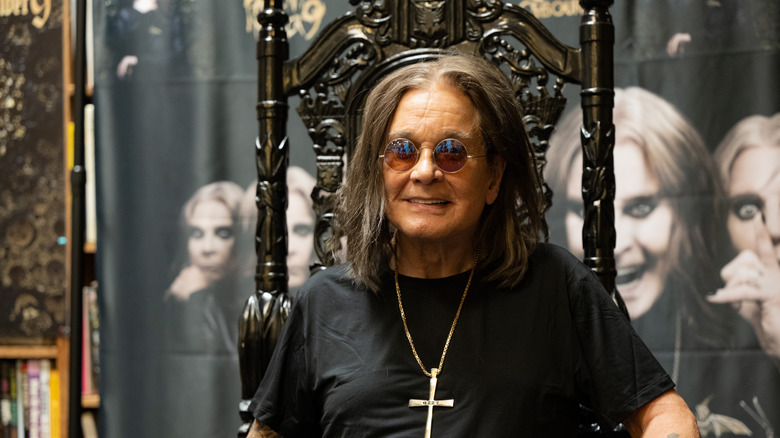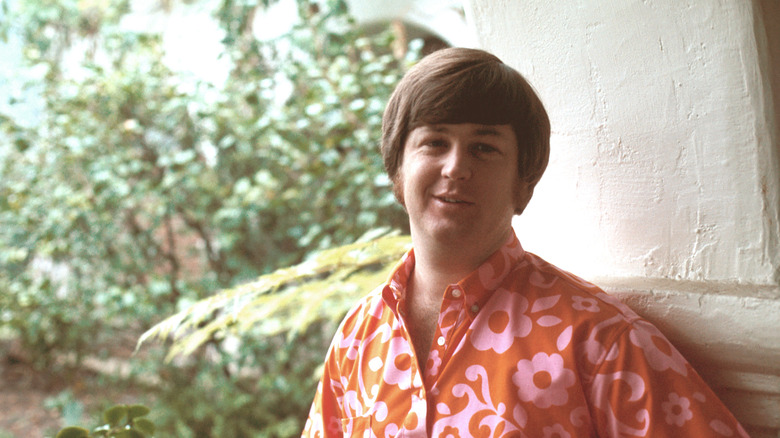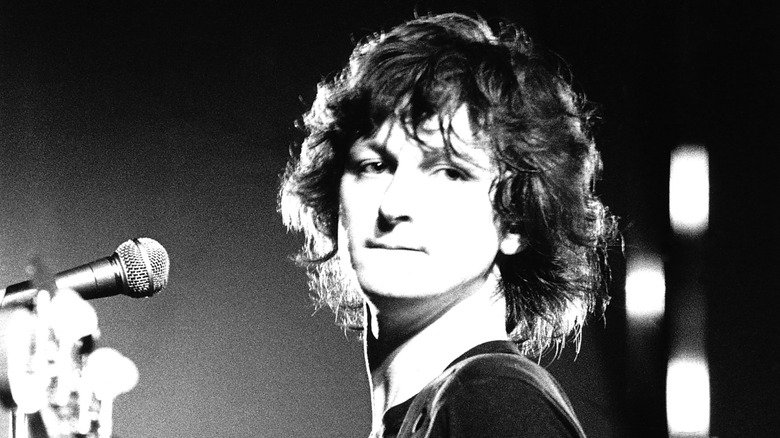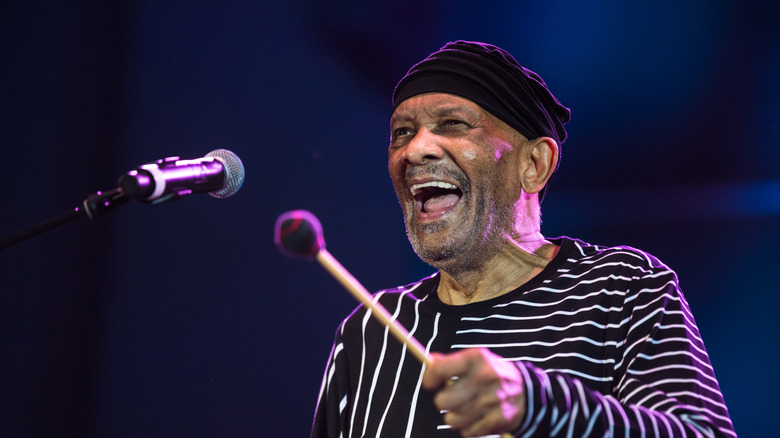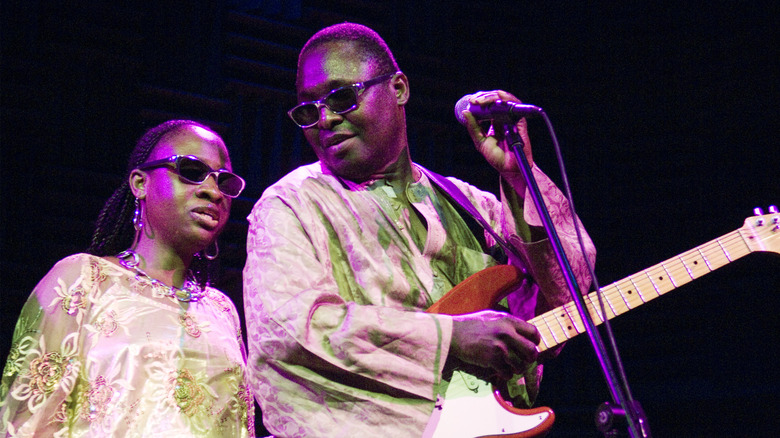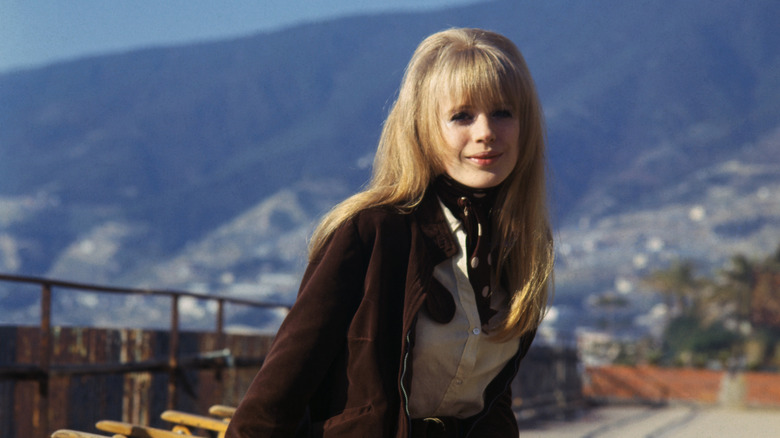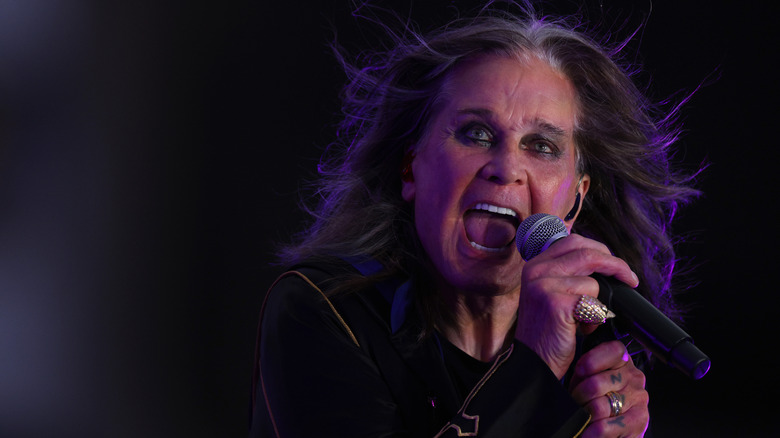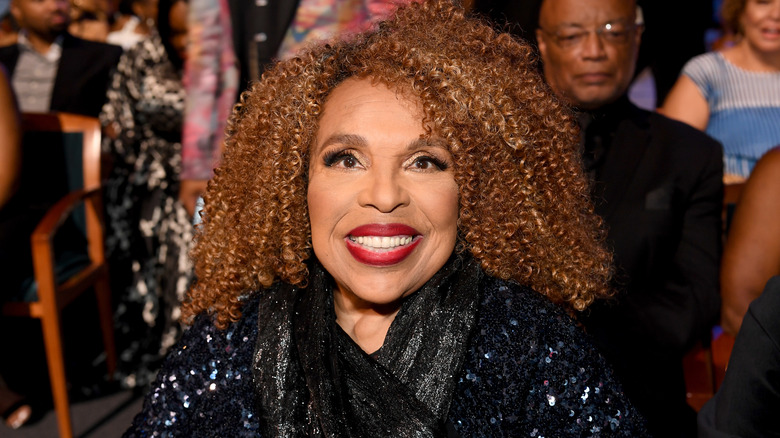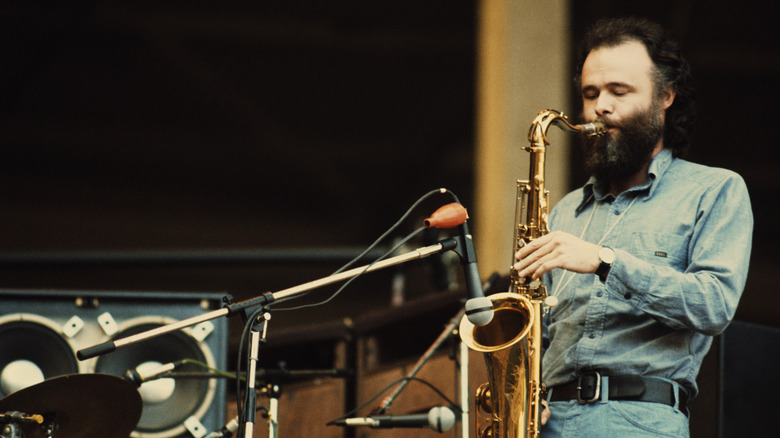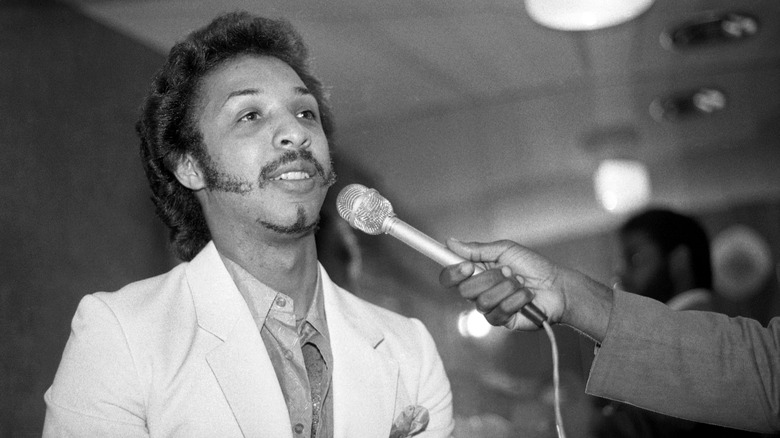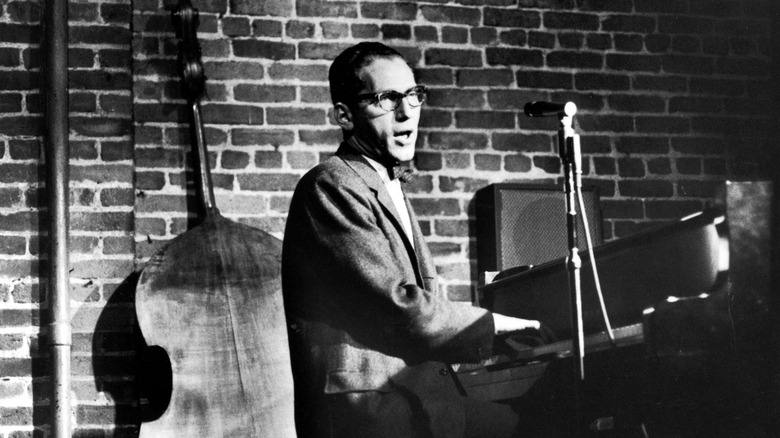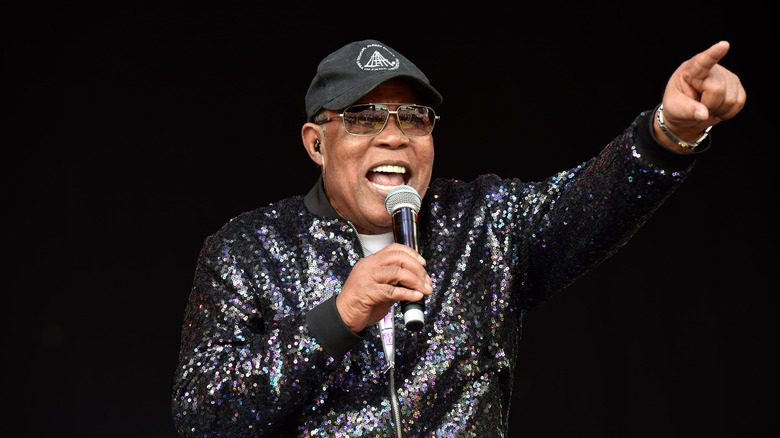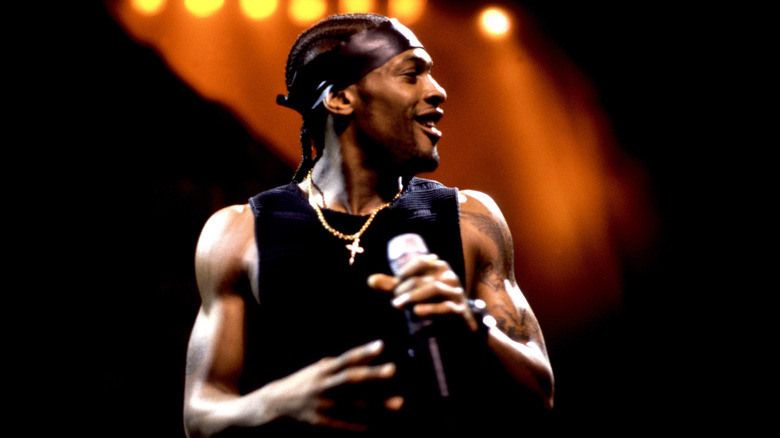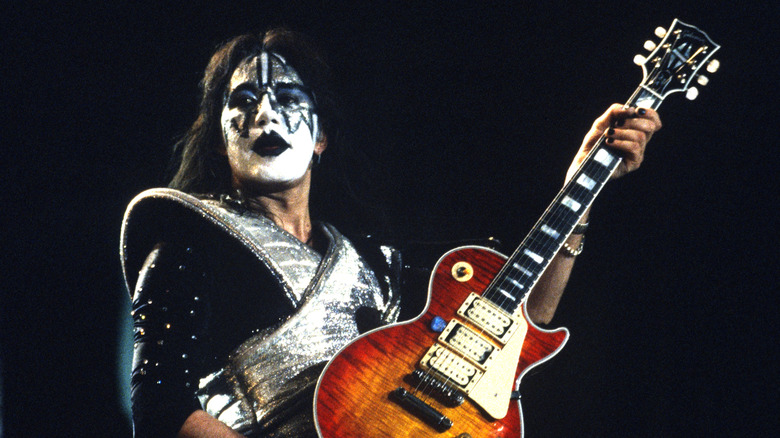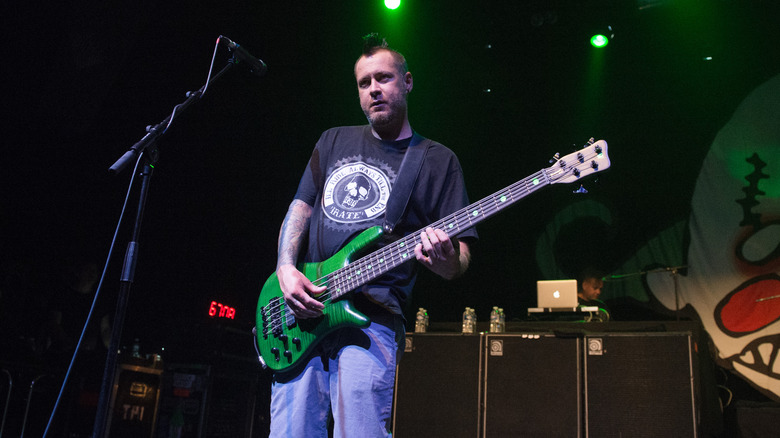Musicians Who Died In 2025 So Far
We may receive a commission on purchases made from links.
It's a sad fact that many musicians only get the appreciation they deserve once they're gone. Popular music is, by its nature, an art form that revolves around novelty. Labels, producers, and listeners are always on the lookout for the newest thing, the debut albums by the latest artists, and the fresh directions musicians may take within their genre or blend of genres. In the meantime, many once in-demand acts can find themselves out of the limelight.
Times change. But when news comes in that a great musician has died, it typically leads to a wave of interest in the work they created during their career. And sadly, in 2025, many iconic artists have died — artists who have collectively made some of the best-loved recordings of recent decades. From classic rock to punk to R&B and beyond, here are some of the legendary musicians we have lost in 2025.
Brian Wilson
Brian Wilson, co-founder of the Beach Boys, whose musical ingenuity filled the airwaves with the catchy, upbeat songs conjuring youth, sunshine, and surfing, died on June 11, 2025, years after a dementia diagnosis left him in need of full time care. He was 82 years old.
Wilson's musical genius, which was admired by the likes of the Beatles and Bob Dylan, was offset by years of mental illness and drug abuse. After the Beach Boys put out a series of hit singles and beloved albums from 1962 to 1966, Wilson struggled to maintain the ability to perform publicly or release new music. However, in the 1990s he had something of a comeback and played a string of concerts, reprising his classic hits like "California Girls," "I Get Around," and "God Only Knows."
His death wasn't a shock due to the public knowledge of his ailing health, but it was still the loss of a person who made a huge impact on the popular culture of his time and beyond. According to his death certificate, published by TMZ, Wilson's official cause of death was respiratory arrest, aided by sepsis and cystitis. Dementia, chronic kidney disease, sleep apnea, and chronic respiratory failure also contributed to his death. His cremated remains were laid to rest at Westwood Memorial Park in LA.
Dave Allen
The punk explosion of the late 1970s blew open the door of what was possible in popular music. Music historians described it as a moment in which the old cliches that defined much of the music of the era — such as overblown production and bloated songwriting — were shaken to the ground. In its wake, New Wave and post-punk groups began making innovative music that harnessed the energy of purist punk but took it in new and exciting directions.
One of the bands to do this especially successfully was the British group Gang of Four. The band's 1979 debut album, "Entertainment!", and 1981 follow-up, "Solid Gold," contained some of the defining sounds of post-punk. Its snarling, anti-capitalist lyrics and caustic, stripped-back instrumentals were underpinned, always, by simple, hooky basslines. These were provided by Dave Allen, who replaced original bassist Dave Wolfson just before the release of "Entertainment!" Though Allen left the band shortly after the release of those albums due to tensions with lead guitarist Andy Gill, his legacy within the genre was already assured by his performances on these classics. Allen played in a wide number of other musical projects and returned to Gang of Four for a short period in the early 2000s. He died April 5, aged 69, having lived with dementia.
Roy Ayers
Roy Ayers' classic track "Everybody Loves the Sunshine" arguably rivals George Gershwin's "Summertime" as being one of the all-time great summer songs. It remains his most famous composition, but the vibraphonist, who died March 4 at the age of 84, had enjoyed a long and distinguished career. During the 1970s and 1980s, when he was a pioneer in the jazz-funk genre, he released over 30 albums, including a collaboration with famed Nigerian bandleader Fela Kuti. Though his output would later slow, he continued to record and tour widely, right up until his farewell tour in 2023, which was cut short due to health complications.
Born in South Central, Los Angeles, Ayers first became interested in the vibraphone at the age of 5, when he was given a pair of mallets by Lionel Hampton after a performance by the Lionel Hampton Big Band. His mother, Ruby, a piano teacher, guided the young musician down the professional path. Often described as the "Godfather of Neo-Soul," he has been exceptionally influential for generations of musicians, and his recordings have been widely sampled in the world of hip-hop.
Amadou Bagayoko
Malian musician Amadou Bagayoko and his wife, Mariam — known simply as Amadou & Mariam — became some of the biggest African music stars of the 21st century. They started releasing albums on a major label in 1998, and their breakthrough came with the release of 2005's "Dimanche à Bamako," which was met with international acclaim for its blend of Western classic rock influences and traditional African sounds. Their follow-up album, "Welcome to Mali," released in 2008, was also an enormous international hit.
Amadou & Mariam's songwriting employs several African languages, as well as French, English, and Spanish, but much of the press attention the duo received also made mention of the fact that the pair were both blind, having both lost their sight as children. As Bagayoko wrote in the couple's 2010 joint autobiography, "Away from the Light of Day," he found himself "drowning his sorrows in music" and became a gifted vocalist and guitarist. Based in France for the early part of their career and under the stewardship of fellow musician Manu Chao, they became a popular live act on the festival circuit and toured often. Bagayoko died in Bamako, the capital of Mali, on April 4 at the age of 70.
Marianne Faithfull
Marianne Faithfull was known to the tabloid newspapers of the 1960s as a young girl who ran around with the biggest rock stars of the era, most notably the Rolling Stones. But over a career lasting six decades, she also established herself as one of the most notable artists of the era. The English singer began her pop career in 1964 with a recording of rock stars Mick Jagger and Keith Richards' "As Tears Go By" — a single that was a hit on both sides of the Atlantic. Unfortunately, it came to a halt in the early 1970s as she dealt with drug addiction.
However, Faithfull orchestrated a stunning comeback a decade later with the album "Broken English," which laid the groundwork for her as a songwriter with her own singular vision. Over the decades that followed, she also proved herself to be a talented interpreter of standards, as well as an eclectic collaborator who worked with artists including Beck, Brian Eno, and Billy Corgan. She also had a notable career as an actress. She died January 30 at the age of 78.
Ozzy Osbourne
British rocker Ozzy Osbourne had perhaps one of the greatest send-offs a musician could ever hope for. As the frontman of metal pioneers Black Sabbath, he was the inspiration for generations of bands to come after, with a theatrical vocal style that has been widely imitated. The band's enduring popularity — and that of Ozzy as a solo artist — was confirmed back in March when they headlined "Back to the Beginning," a one-day festival at Villa Park in the band's home city of Birmingham, U.K. Supported by the biggest names in rock music, including Guns 'N Roses and Metallica, the event was billed as the band's send-off and was streamed to a paying audience from around the world.
Ozzy had dealt with a number of health issues leading up to his death. The singer revealed that he had been diagnosed with Parkinson's disease way back in 2003, and his mobility was also affected by a neck injury he suffered during a fall in 2019. Osbourne performed a short solo set prior to headlining "Back to the Beginning," while the Black Sabbath set consisted of just four songs. However, critics and fans agreed that it was a glorious farewell for the star, who died just weeks later on July 22 at the age of 76. As reported by Guitar Player, Sabbath guitarist Tony Iommi spoke to ITV in an interview after Ozzy's death: "I think he really just held out to do that show. I really feel ... he held out to do it, and just after that, he's done it and said goodbye to the fans. And that was the end of it."
Roberta Flack
Roberta Flack was one of the most recognizable voices of the early 1970s. Her early hits included duets with Donny Hathaway that landed respectably on the R&B charts and earned her Grammy nominations. However, Flack's incredible talents as a vocalist and pianist were only truly recognized by a mass audience after her song "The First Time Ever I Saw Your Face" — which appeared on her 1969 debut, "First Take" — was featured in the 1971 Clint Eastwood movie "Play Misty for Me." The track went to No. 1 on the Billboard Hot 100 for six weeks, turning Flack into a superstar. The hit coincided with the release of the album "Roberta Flack & Donny Hathaway," which contained the single "Where is the Love." The two songs were Grammy winners, with the former taking record of the year for 1972.
The following year, Flack cemented her position as one of the biggest names in music with the release of "Killing Me Softly," the gorgeous ballad from the album of the same name that became her signature song and earned her yet another record of the year Grammy. Flack continued to release acclaimed albums in the decades that followed, her last arriving in 2012. In 2020, she was given the Grammy Lifetime Achievement Award. Having suffered from amyotrophic lateral sclerosis (ALS, or Lou Gehrig's disease) in her final years, she died of cardiac arrest on February 24 at age 88.
Garth Hudson
Canadian multi-instrumentalist Garth Hudson first came to prominence as a member of the Hawks. After working as Bob Dylan's backing band, they changed their name to "the Band" and went on to find fame in their own right. As the innovative organ player of the Band in the 1960s, Hudson created many of the textures that made their classic albums — such as their 1968 debut, "Music from Big Pink" — so distinctive. Moving towards the use of synthesizers during the 1970s, Hudson enjoyed a long, rich, and varied career, working with a wide array of artists and carving his way as a solo artist in the early 2000s.
The longest living of all the members of the Band, Hudson died January 21 at the age of 87. In recent decades, he made a habit of performing as a guest on the work of other musicians but also continued to make conscious steps to secure the Band's legacy. The 2012 album "Chest Fever: A Canadian Tribute to the Band," named after a Band song containing one of Hudson's most famous organ parts, featured performances by big names such as Neil Young and the Sadies and was warmly received by fans.
Chris Jasper
The classic R&B group the Isley Brothers had already been in the music business for a long time by the time Chris Jasper joined the group in 1973. However, it was after his arrival that they enjoyed their greatest period of critical and commercial success. Jasper was a Juilliard-trained classic musician who brought impeccable ability to the keyboard as well as a crystal-clear voice to the studio to help push R&B to new heights of musical sophistication.
Most notably, Jasper brought his understanding of classical forms to his compositions. As he explained in an interview with Rockin' Hot Radio in 2020, he used "voicings that were used in classical music, and in particular the Romantic period, with composers like Debussy, even 20th-century composers like Gershwin." Having performed with the Isley Brothers on a string of hits, including "That Lady" and "Fight The Power," he formed the spin-off group Isley Jasper Isley in 1984. While it was short-lived, the band released three albums by 1987 and produced four R&B Top 20 singles, including "Caravan of Love," which topped the chart. Jasper's solo career began with the single "Superbad" in 1987, which got into the Top 3. He died February 23 at the age of 73.
Tom Lehrer
A beloved countercultural figure of the mid-20th century, Tom Lehrer was a songwriter known for his brutally satirical lyrics and dark humor. Songs such as "The Vatican Rag" and "Poisoning Pigeons in the Park" were huge hits on college radio, and he toured locally around Cambridge, Massachusetts, with shows featuring him performing at the piano, until 1960. Then, he seemed to call it quits, only reappearing to the work of music in 1965 and 1967. Afterward, he retired from the industry despite still being under 40.
It may seem like the career path of a recluse, but the truth is that despite possessing talent and charisma that saw his records sell in their hundreds of thousands, for Lehrer music was only a side interest. Before emerging onto the airwaves, Lehrer had been a professor of mathematics, and he returned to academia after quitting the music industry. He taught at Harvard, the Massachusetts Institute of Technology, and the University of California during his career and lent his expertise to the U.S. Atomic Energy Commission. In 2020, he released his songs into the public domain, allowing anyone to download his work for free through his website. He died July 26 at the age of 97.
Sam Moore
Sam Moore was part of the legendary duo Sam & Dave alongside Dave Prater. The pair enjoyed huge success in the 1960s with a string of hit singles that are considered among the best in the R&B and soul genres. Born Samuel Hicks, Moore spent his early years singing gospel music before transitioning into R&B, performing widely around his home state of Florida. He met Prater in 1961, and the two quickly realized that they could form an act that was greater than the sum of its parts.
Though their records of the early part of the decade failed to establish them commercially, after signing to Atlantic Records in 1965, all the pieces fell into place. The duo was sent to Stax Records in Memphis, where they got to work with some of the biggest talents of the era, including songwriters Isaac Hayes and David Porter, and Booker T and the M.G.'s, who at the time were Stax's house band. The combination laid the groundwork for some huge hits, including the classics "Soul Man" and "Hold On, I'm Coming."
However, the duo had a rocky relationship. Moore experienced addiction during the height of their fame, and he had a falling out with Prater after the latter shot his own wife during an argument, nearly killing her. They parted ways in 1970. Though Moore's solo career was derailed after the murder of his debut's producer, King Curtis, the following year, he remained active in the music scene and reunited with Prater occasionally until his death in a traffic collision in 1988. Moore, who recorded into his 80s, died January 10, age 89.
D'Angelo
The neo-soul pioneer D'Angelo first burst onto the scene with the acclaimed "Brown Sugar" single and album of the same name in 1995. A talented vocalist, songwriter, musician, and producer, his effect of modernizing R&B during the latter half of the decade was seismic, and his influence incalculable for countless artists that would follow in his wake. His appearance on Lauryn Hill's "Nothing Even Matters" on her 1998 classic "The Miseducation of Lauryn Hill" positioned him as an artist who was working with the best of the best.
His long-awaited follow-up, "Voodoo," finally appeared in 2000 and hit the top of the Billboard 200. The album spawned five singles, including "Untitled (How Does It Feel)," the controversial, erotic video for which featured D'Angelo in the nude. He struggled afterward with his sex-symbol status and experienced addiction over the following decade. The album won the Grammy for Best R&B Album, as did his next release, "Black Messiah," which finally surfaced in 2014 to a wave of acclaim.
Apart from the 2019 song "Unshaken" and the Jay-Z and Jeymes Samuel collaboration, "I Want You Forever," in 2024, D'Angelo didn't release any more studio work during his lifetime. Little did his fans know that he had been receiving treatment for pancreatic cancer — the musician had kept his growing health issues out of the public eye. He died October 14, age 51.
Ace Frehley
Ace Frehley, who died October 16 at the age of 74, was one of rock music's most iconic guitarists. Not just for how his guitar sounded — Tom Morello of Rage Against the Machine claimed Frehley "blazed unforgettable, timeless licks" (via The New York Times) — but for the incredible theatricality he brought to his performances. As a member of the hard rock band KISS, he became a megastar in the late 1970s, when the band's struggling career was finally given a shot in the arm by the release of "Alive!" The seminal 1975 live album earned them millions of fans and made them a lucrative act ever after.
Frehley differed from teetotal bandmate Gene Simmons in using drugs and alcohol. Eventually, he left the band in 1982 and put his energies into a successful solo career. However, he did reunite with KISS for several reunion shows in later years, last performing with the band at the closing ceremony of the Winter Olympics in 2002.
Sam Rivers
Sam Rivers, bassist for one of the most influential (and hated) nu-metal acts of all time, Limp Bizkit, died on October 19th.
Upon his death, the band said in a statement: "Sam Rivers wasn't just our bass player — he was pure magic. The pulse beneath every song, the calm in the chaos, the soul in the sound. He was a once-in-a-lifetime kind of human. A true legend of legends. And his spirit will live forever in every groove, every stage, every memory."
Mashing together rock, metal, rap, and hints of other genres as well, Limp Bizkit rose to prominence in the late '90s and enjoyed massive success in the early 2000s. Though their popularity fizzled out for a good number of years, they've been enjoying a resurgence as of late — their latest single, "Making Love to Morgan Wallen," rose to the top of several Billboard charts in September (via Billboard). Rivers had been a mainstay throughout most of the band's tenure; he left the band in 2015 to deal with liver disease but returned in 2018. That being said, it's hard to say how his death will affect the band going forward.
If you or anyone you know needs help with addiction issues, help is available. Visit the Substance Abuse and Mental Health Services Administration website or contact SAMHSA's National Helpline at 1-800-662-HELP (4357).
If you or someone you know needs help with mental health, please contact the Crisis Text Line by texting HOME to 741741, call the National Alliance on Mental Illness helpline at 1-800-950-NAMI (6264), or visit the National Institute of Mental Health website.
